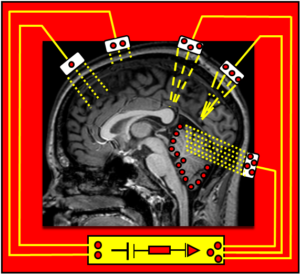
The human, social and economic impact of brain disorders (BDs) is huge. BDs impair quality of life, cause a substantial loss of productivity and resource utilization with high economic costs in every country of the world. The majority of the socioeconomic burden of BDs is caused by the years of active life lost because of the disability. For instance, the societal cost amounted to €84 billion in Spain in 2010. In UK, 45 million patients suffered from BDs with an annual cost of €134 billion.
A key-question for the scientific community is how to promote motor recovery in BDs. Researchers have been trying to identify methods to boost recovery for decades; through this, several mechanisms slowing or impairing recovery have now been deciphered. For instance, the intact motor cortex contralateral to a mild chronic stroke will drive higher inhibitory volleys, so that the damaged motor cortex will be over-inhibited. This maladaptive plasticity is a source of poor motor recovery.
In case of severe stroke, an increase in the activation of contralesional motor cortex is an important factor for recovery. When the structural reserve is big enough, the model of interhemispheric inhibition model appears valid. At a molecular level, the cascade of events following brain lesion is also better understood now. In addition to direct cellular consequences, the injury often triggers secondary deleterious events at the level of the blood-brain barrier, neurons and glia.
The actors behind these neuroinflammatory events have both protective and detrimental properties. Thus, it is desirable to develop therapeutic tools that will facilitate brain or cellular reserve, restore lost capacities and enhance compensation.
Transcranial direct current stimulation
Transcranial direct current stimulation (tDCS) is an emerging non-invasive technique based on the application of a weak current over the skull to tune the excitability of the brain. tDCS consists of the administration of anodal (excitatory) or cathodal (inhibitory) currents to induce electrophysiological changes of the cerebral cortex or the cerebellum. The latter has an anatomical structure with a high density of neurons in the superficial layer and is involved in numerous closed-loop circuits including motor circuits, hence its current attractiveness for neuromodulation.
tDCS is a promising technique to promote long-term functional recovery via long-term depression (LTD) or potentiation (LTP).These tDCS-induced modifications in neural circuits contribute to the restoration in motor or cognitive functions. For appropriate manipulations, the current can be administered continuously or using pulses at selected frequencies.
We have now entered in an era of personalized application of tDCS, taking also into account the emergent high-definition tDCS. The parameters of a tDCS session are multiple, especially head anatomy, location of the lesion, optimization of electrode positioning according to the activity of brain networks, possibility of multiple sites of stimulation, administration of currents simultaneously to motor tasks and concomitant drug delivery.
Furthermore, tDCS may come within a package of non-invasive stimulation techniques, including transcranial magnetic stimulation (TMS). Large scale trials are mandatory in order to obtain sound results that will convince health authorities. The articles of this thematic Journal of NeuroEngineering and Rehabilitation series arrive right on time to stimulate researchers all over the world. The contributors have made valuable efforts to explain how tDCS could enter in the clinical routine in the next years.
Comments